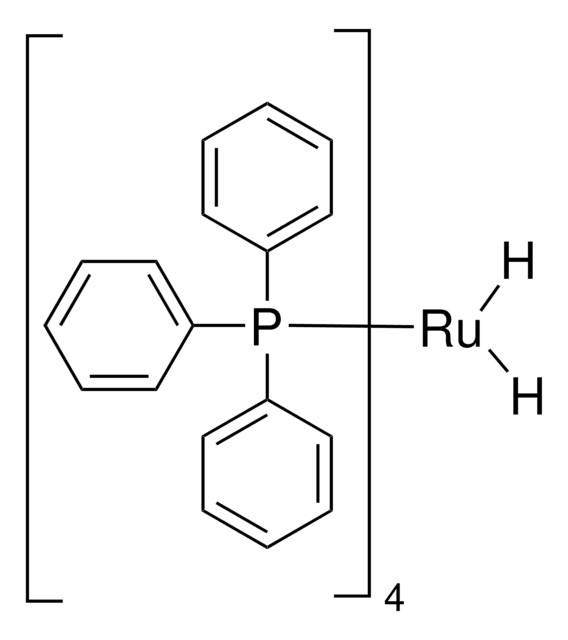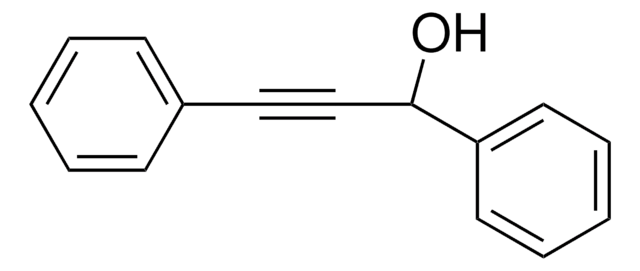223662
Tris(triphenylphosphin)ruthenium(II)-dichlorid
97%
Synonym(e):
Dichlor-tris-(triphenylphosphin)-ruthenium(II), Ruthenium(II)-tris-(triphenylphosphin)-dichlorid
About This Item
Empfohlene Produkte
Assay
97%
Eignung der Reaktion
core: ruthenium
reagent type: catalyst
reaction type: C-H Activation
SMILES String
Cl[Ru]Cl.c1ccc(cc1)P(c2ccccc2)c3ccccc3.c4ccc(cc4)P(c5ccccc5)c6ccccc6.c7ccc(cc7)P(c8ccccc8)c9ccccc9
InChI
1S/3C18H15P.2ClH.Ru/c3*1-4-10-16(11-5-1)19(17-12-6-2-7-13-17)18-14-8-3-9-15-18;;;/h3*1-15H;2*1H;/q;;;;;+2/p-2
InChIKey
WIWBLJMBLGWSIN-UHFFFAOYSA-L
Suchen Sie nach ähnlichen Produkten? Aufrufen Leitfaden zum Produktvergleich
Anwendung
- Functionalized alcohols by C-C cross-coupling reaction between different alcohols via sp3 C-H bond activation of primary alcohols in the presence of Lewis acid.
- Furan derivatives from allenyl sulfides via 1,4 migration of the sulfanyl group.
- 1,3-diphenylpropan-1-one by alkylation of acetophenone with benzyl alcohol via C-C bond formation.
- Vinyl chloride monomer by hydrochlorination reaction of acetylene.
RuCl2(PPh3)3 can also be used as a catalyst in the cyclization, isomerization, reduction, oxidation, and cross-coupling reactions of a variety of organic products. Hydrogenation of nitro groups, imines, and ketones, as well as selective oxidation of alcohols are also possible in the presence of this catalyst.
Lagerklassenschlüssel
11 - Combustible Solids
WGK
WGK 3
Flammpunkt (°F)
Not applicable
Flammpunkt (°C)
Not applicable
Persönliche Schutzausrüstung
dust mask type N95 (US), Eyeshields, Gloves
Analysenzertifikate (COA)
Suchen Sie nach Analysenzertifikate (COA), indem Sie die Lot-/Chargennummer des Produkts eingeben. Lot- und Chargennummern sind auf dem Produktetikett hinter den Wörtern ‘Lot’ oder ‘Batch’ (Lot oder Charge) zu finden.
Besitzen Sie dieses Produkt bereits?
In der Dokumentenbibliothek finden Sie die Dokumentation zu den Produkten, die Sie kürzlich erworben haben.
Kunden haben sich ebenfalls angesehen
Unser Team von Wissenschaftlern verfügt über Erfahrung in allen Forschungsbereichen einschließlich Life Science, Materialwissenschaften, chemischer Synthese, Chromatographie, Analytik und vielen mehr..
Setzen Sie sich mit dem technischen Dienst in Verbindung.












